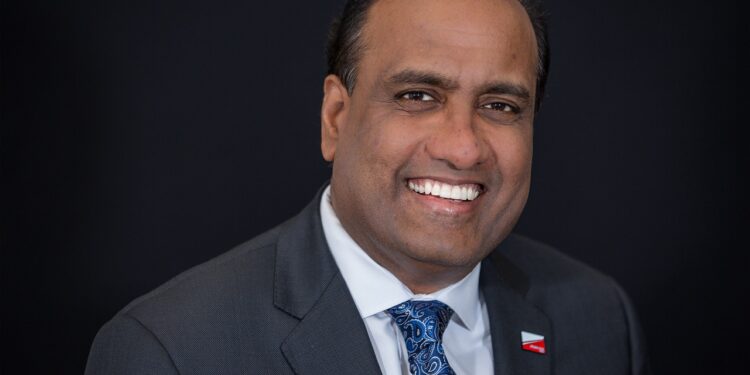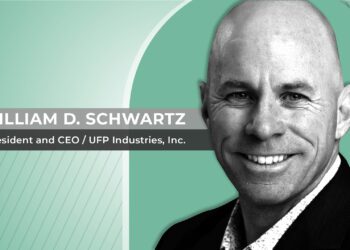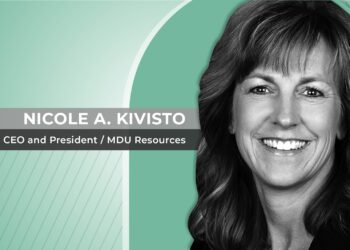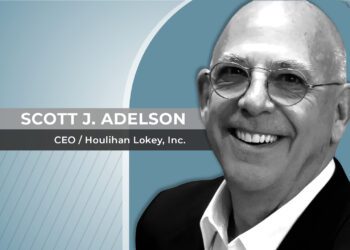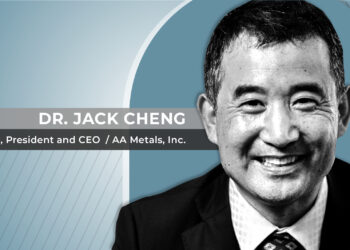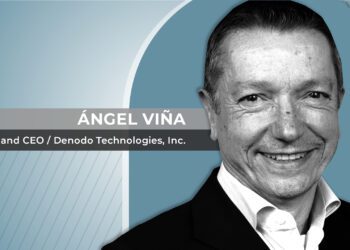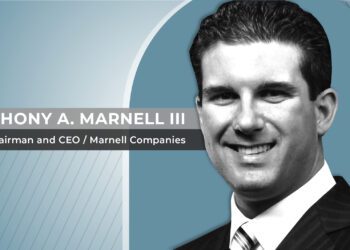At the end of the day, people are the most important asset of any company.
Indian farm equipment behemoth Mahindra’s US unit has turned the leaf of the global recession by relying on its RISE principles and the hard working people at its Houston HQ.
A hardwired set of values both from home and from a company’s culture bent on positive outcomes has helped Mani Iyer take India’s giant farm equipment maker Mahindra’s US unit to the forefront of a very competitive industry and across the worst economic crisis in recent times.
Iyer, a Bangalore-born engineer with decades of experience in the farm machinery sector, says his “dream job” was always to lead a global unit for Mahindra, the company he joined in 1991. But it became a reality when he was named to the position of Mahindra North America in the middle of the Great Recession of 2008-2009, “a very complex time. The economy was in the doldrums, the future looked bleak and the company itself was going trough a bit of hardship,” he says.
But a culture of hard work instilled by his parents as well as Mahindra’s RISE principles of accepting no limits, thinking outside the box and looking for positive outcomes helped propel the company back into the black in very little time, he adds.
Iyer sets the reasons for the company’s speedy recovery on what he calls “The Power of Three”: “The first Power is the brand. I am talking about our business and the fact that we are here for the long run,” he says. Figures from the company certainly look that way, as Mahindra North America claims to have tripled market share and quadrupled revenue while growing at five times the market pace in the last five years. In the last financial year the company grew its North American business by 8% as it also plans to double its portfolio and market share in the next five years.
Power Two, Iyer adds, is the company’s valued partnerships. “You can only do so much on your own, but there are partnerships with people across the organization as well as with supplier partners across the world. You need to have trust and transparency and work together with your partners for mutual success. We get products from Japan and South Korea, we get products from India: we also do significant local sourcing within the US.”
Finally, “Power Three is our employees. At the end of the day, people are the most important asset of any company and we have a very flat, passionate, and responsive matrix organization,” Iyer claims.
During the last fiscal year the company focused on tripling the size of its facilities to support the growth of the parts business including the addition of an automated parts delivery system to increase response time and efficiency. The company, which assembles and sells tractors in the US from 20 to 105 horsepower, said in a press release that it also “relocated and expanded its West Coast assembly and distribution center to Marysville, California, and expanded the facility in Bloomsburg, Pennsylvania, serving its northeast dealer network.”
And after improving distribution and service in Canada in late 2016 with the sixth Mahindra Authorized Distribution Center (MADC) in Adstock, Quebec, a 22,000 sq. ft. assembly and distribution facility, Mahindra is also looking to complete the set of NAFTA countries it services from Houston by entering Mexico with a distribution center in the Latin American country, Iyer added.
WHAT MAKES A LEADER?
As a company with a long history of developing leadership and reaching out to new sectors, Mahindra was a great place to become a leader, according to Iyer. The Indian conglomerate makes its business from the farm equipment to the hospitality sector, crossing everything from telecommunications to automotive to defense systems in between and leadership couching came early after he joined the company in 1991.
“After I joined Mahindra I worked through many functions, as a city guy mostly I was interested in the automotive sector but they put me in the farm sector. I traveled through the landscape of India and the simplicity of the entire business attracted me to stay in the farm equipment sector. I worked in many functions and got coaching from very good leaders during my younger days after finishing my engineering degree,” he says. The company’s global footprint gave him the opportunity to expose himself early to different styles of leadership beyond that of India, including managerial staff from the US, Iyer adds.
Dedication and focus is also where it’s at, Iyer insists. “We have worked nearly 24/7 to give our employees and our partners the confidence to stay, unlike many companies that sort of gave up,” after the global financial crisis. The company’s rise to prominence has been rewarded with increased visibility. In June last year, the US Department of Commerce appointed Iyer to the newly formed Investment Advisory Council (IAC), a body created to promote foreign direct investment (FDI) in the North American country.
EXPANSION PLANS
As the company’s footing looks more firm in the northern part of the continent, Mahindra is setting its sights also on South America. Iyer said they recently purchased the assets of its Brazil distributor with the aim of entering that market and eventually the rest of the southern part of Latin America. “That is one shift, from being Mahindra North America to being Mahindra Americas.”
“The second big shift is the revamping of our product portfolio to launch new products in the category as well as expand it and our distribution network,” he added.
Those changes become a necessity in a market where large competitors such as Deere and Company (NYSE:DE) –with annual sales of $26.6 billion last fiscal year– “have deep pockets and have been highly competitive for the last one or two years.”
“It is going to be tough, it is not something I take lightly but to be a strong number three or to get to being number two or even one in the market is going to be a game to play,” especially when faced with weak forecasts for the agricultural industry in the US, Iyer adds.
A US Department of Agriculture (USDA) report in February painted a mixed outlook for the country’s agricultural activity in the middle of the a slow global economic recovery. “Over the next several years, the agricultural sector continues to adjust to lower prices for most farm commodities. Although reduced energy prices have decreased energy-related agricultural production costs, lower crop prices result in declines in planted acreage,” the report on US agricultural projections to 2026 says, adding that “while the combination of slowing economic growth rates and a stronger dollar is expected to be a drag on growth in US agricultural exports over the projection period, global demand for food and agricultural products will continue to expand.”
SIMPLICITY WORKS
Keeping it simple is one of the company’s mantras, as it helps maintain the business in good shape. But that does not mean staying the same, as innovation and the combination of strong domestic partners and a worldwide supply chain are also key.
“To offer the best value, we source globally to take care of cyclical changes and exchange rate variations across the world. We also think out of the box and one example comes from the more stringent emissions standards set by the government, where we have come up with a lower maintenance engine than what the competition can offer,” he says.
In the search for more efficient business models, the company relies a lot on the expertise of partners and is also looking to further invest in and expand its distribution network. “We do look for an effi- cient model in all areas of business including sup- ply chain, sales and marketing programs, but we also keep the business very simple.”
“I traveled through the landscape of India and the simplicity of the entire business attracted me to stay in the farm equipment sector”

